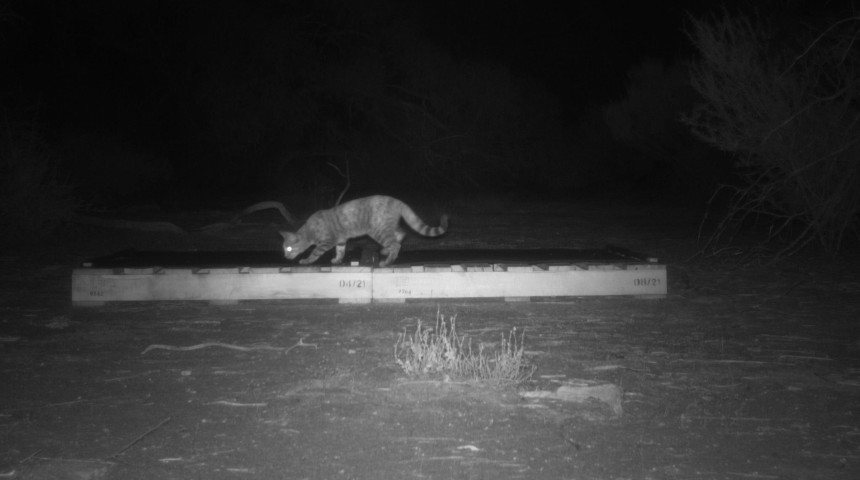
Tenaya Duncan, Conservation and Wildlife Biology PhD student at Murdoch University, is investigating ways to provide artificial shelters for wildlife to keep them safe from predators while they wait for their homes in disturbed landscapes to be restored.
Miss Duncan said artificial shelters are human made materials that aim to replace the shelter that has been lost.
“Materials as simple as corrugated iron, wooden pallets, and fence posts can give our wildlife their homes back.
We’re giving them somewhere to hide from feral cat attacks, as well as provide shelter from stormy nights and hot summer days.”
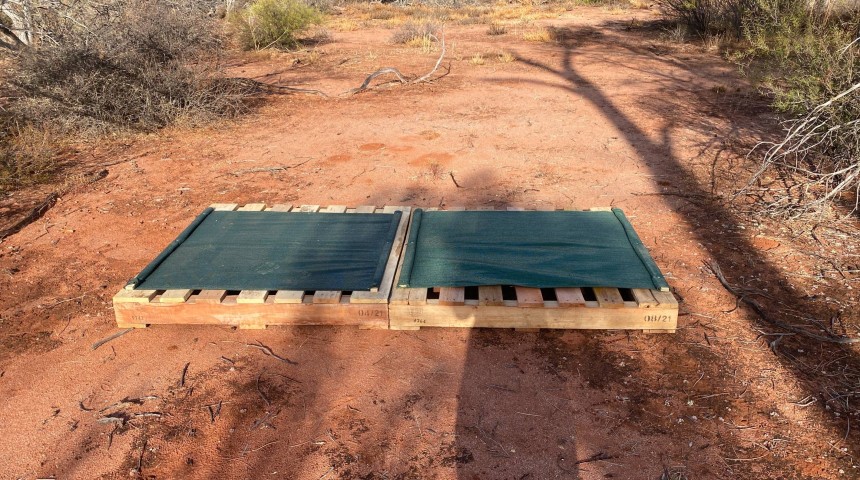 Wooden pallet refuge. Photo supplied by Tenaya Duncan.
Wooden pallet refuge. Photo supplied by Tenaya Duncan.
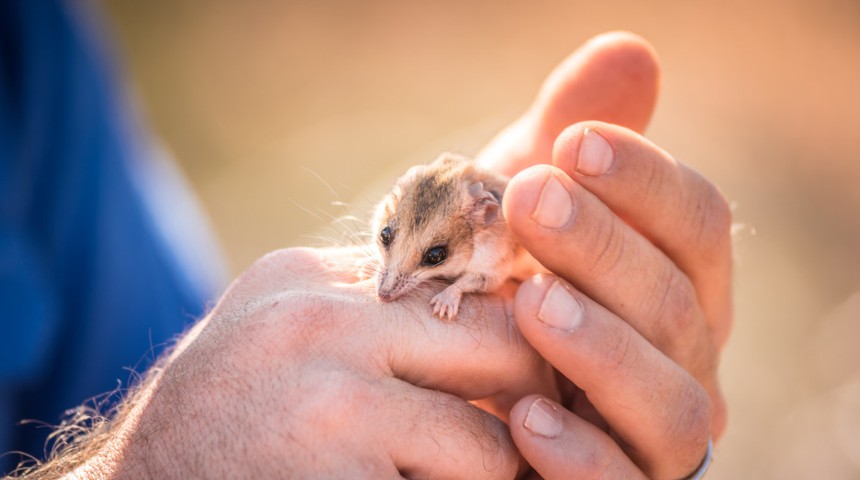 A Hairy-footed Dunnart at Bush Heritage’s Hamelin Station Reserve. Photo by Annette Ruzicka.
A Hairy-footed Dunnart at Bush Heritage’s Hamelin Station Reserve. Photo by Annette Ruzicka.
Miss Duncan’s research has already shown that small mammals and reptile species will use the artificial shelters within two weeks of deployment.
“The Doctor of Philosophy had a combination of everything I love and offered a new approach to making an impact through research.”
“By using artificial shelters, we are giving our wildlife a fighting chance against habitat disturbance,” she said.
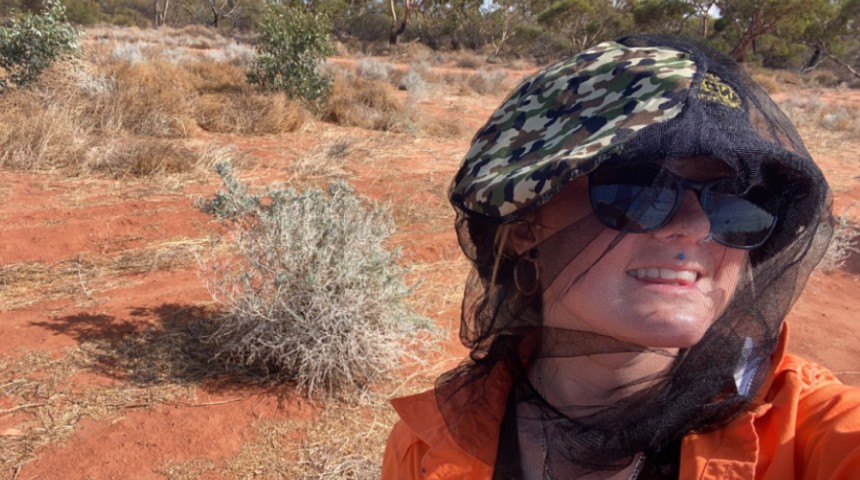
Miss Duncan said habitat disturbance is a significant threat to Australian wildlife, as it removes shelter from the landscape, essentially taking away wildlife homes.
“This increases our wildlife’s exposure to feral cats, who are their own significant threat consuming up to 2.2 billion animals per year.”
Miss Duncan said a solution to land clearing is replanting thousands of trees back into the landscape like we have for many years.
“This support is critical, however, our wildlife does not have the time to wait for the trees to grow back to what they once were,” she said.
Miss Duncan said this results in native animals without a home and in great danger, every hour of every day.
Dr Trish Fleming, Professor in Environmental and Conservation sciences and principal supervisor for Miss Duncan’s research, said feral cats and habitat disturbance represent the largest threat to biodiversity.
“142 native species and subspecies (40 mammals, 40 birds and 21 reptiles) are now listed as threatened due to feral cats and a further 22 mammal species are extinct because of cat predation, with cats being much more successful hunters in disturbed landscapes,” she said.
The research Miss Duncan is conducting has the potential to save the lives of many wildlife species, reduce feral cat impacts, and will help us work towards preserving Australia’s biodiversity.”
Miss Duncan has been working across two sites, Hamelin Station Reserve and Eurardy Nature Reserve, managed by national not-for-profit conservation organisation, Bush Heritage Australia.
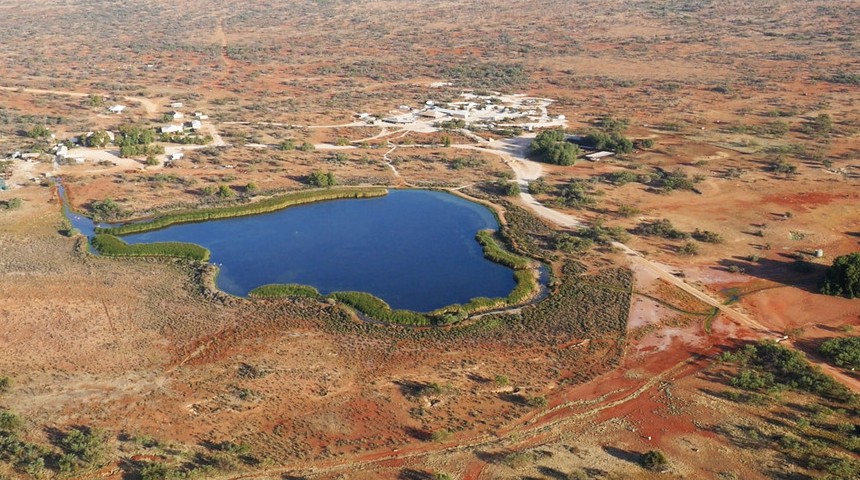 Aerial view of Bush Heritage’s Hamelin Station Reserve. Photo by Wild Vista.
Aerial view of Bush Heritage’s Hamelin Station Reserve. Photo by Wild Vista.
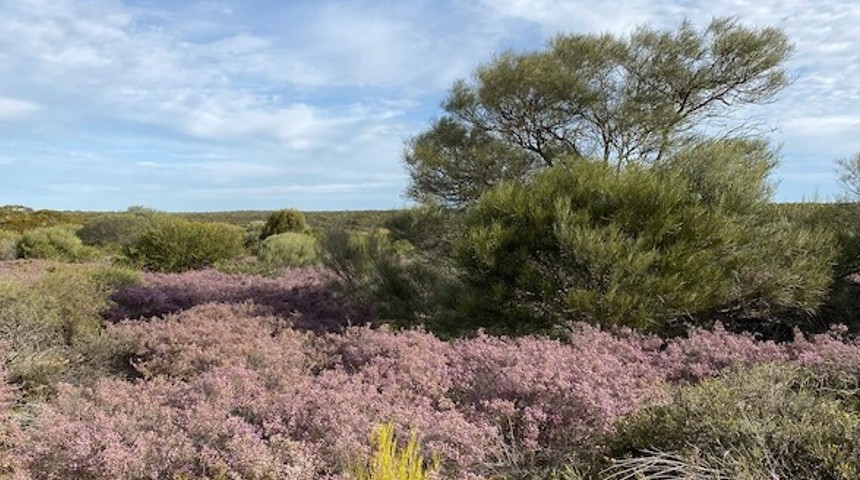 Wildflowers at Bush Heritage’s Eurardy Reserve. Photo by Vibeke Stisen.
Wildflowers at Bush Heritage’s Eurardy Reserve. Photo by Vibeke Stisen.
The aim of her research is to use artificial refuges to reduce feral cat predation on small Australian mammal and reptile species.
According to her supervisor and Bush Heritage ecologist Michelle Hall, this research is vital to helping restore essential ecosystems.
“Returning the bush to good health needs a holistic and multi-faceted approach, and Tenaya’s research is vital for helping us understand the potential for artificial shelters to contribute to ecosystem restoration.”
Hamelin Station Reserve and Eurardy reserve form part of a nature corridor in an area of high conservation importance. At 202,644 hectares, Hamelin is a buffer for the Shark Bay World Heritage Area and connects with Eurardy via Toolonga Nature Reserve.
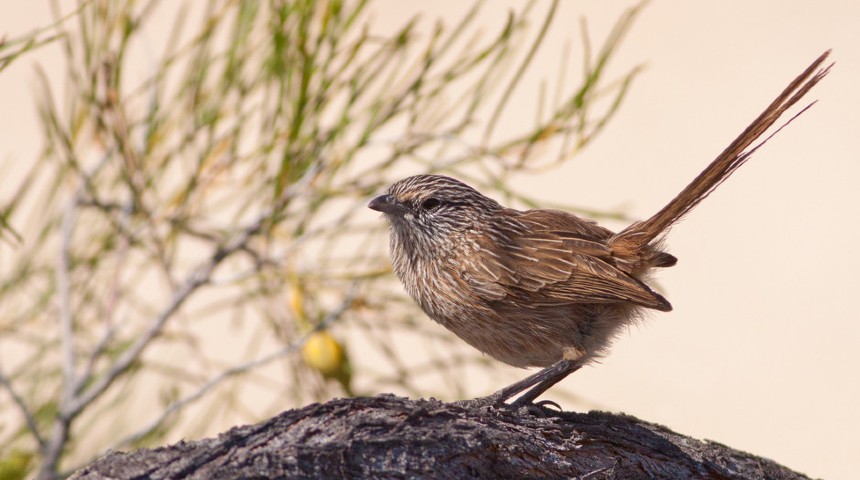 Western Grasswren at Bush Heritage’s Hamelin Station Reserve. Photo by Ben Parkhurst.
Western Grasswren at Bush Heritage’s Hamelin Station Reserve. Photo by Ben Parkhurst.
“Hamelin and Eurardy lie in a warm semi-arid part of Australia, where artificial shelters could be particularly beneficial to native fauna because native vegetation that may be naturally sparse can also be slower to recover from disturbance than in wetter parts of Australia,” said Dr Hall.